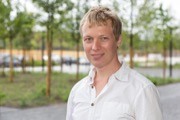The talk will take place at 14h on monday the 21th november at the ThéMA lab building (3rd floor building D).

Rémi Lemoy
Researcher (Post-doc) at the University of Luxembourg
Publications: https://www.researchgate.net/profile/Remi_Lemoy
Abstract:
In this work we study the profile of land use and population density in European cities with respect to the distance to the city centre. We use the GMES Urban Atlas database, providing a precise description of land use at 5m resolution in the 300 major European urban areas (more than 100.000 inhabitants). We combine this dataset with population density from the Geostat population grid, which covers the whole of European Union with a 1km2 resolution. Population is allocated proportionally to surface and weighted by soil sealing and density classes of the GMES data.
We analyse the evolution with distance to the city centre of population density and of the share of land which is artificial. We analyse the scaling of these curves with respect to city population. We find that land use curves, in particular artificial land uses, tend to scale like the square root of city population. Population curves have roughly exponential shapes, as it has been widely modelled in the literature, although usually not based on land use and soil sealing data. Population curves tend to scale like the city population to a power of roughly 1/3.
These results allow us to propose a simple monocentric description of land use shares and population curves in a representative European city, whose size can be chosen based on the scaling relationships we obtain. This result is especially interesting, and of practical use, for the purpose of calibration and validation of monocentric urban models, that can differentiate (or not) housing from land and include interactions between non-developed and developed land.
